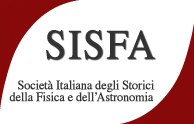Speaker
Description
The Proposition LXVI (Book I, Newton’s Principia) with its 22 corollaries is the longest proposition of Newton’s masterpiece. It faces the three bodies-problem. This problem cannot be solved in general terms; Newton by few qualitative indications solved it in specific cases. Based on previous and current research on Newton’s Geneva Edition ([1739-1742]1822), we remark that Geneva Edition's editors, Le Seur and Jacquier, explained Newton’s approach to this famous problem. They added an interesting series of footnotes to clarify Newton’s procedures. In our talk we will 1) explain the meaning and the most important features of this Prop./corollaries; 2) analyse the structures of their footnotes in the range of this Prop., and as a case study.
**References **
Bussotti P, Pisano R (2014) Newton’s Philosophiae Naturalis Principia Mathematica “Jesuit” Edition. Accademia Nazionale Lincei–Matematica e Applicazioni 25/4:413–444
Bussotti P, Pisano R (2017) Historical and Philosophical Details on Leibniz’s Planetary Movements as Physical-Structural Model. In: Pisano R, Fichant M, Bussotti P, Oliveira ARE (eds). College Publications, London, pp. 49-92.
Newton I ([1726] [1739-1742] 1822) Philosophiae Naturalis Principia Mathematica, auctore Isaaco Newtono, Eq. Aurato. […] Thomae le Seur et Francisci Jacquier […]. A. et J. Duncan, Glasgow.
Pisano R, Bussotti P (2016a) A Newtonian Tale Details on Notes and Proofs in Geneva Edition of Newton’s Principia. Journal of the British Society for the History of Mathematics 31/3:160-178
Pisano R, Bussotti P (2016b) The Fiction of the Infinitesimals in Newton’s Works: A note on the Metaphoric use of Infinitesimals in Newton. Isonomia 9:141-160

